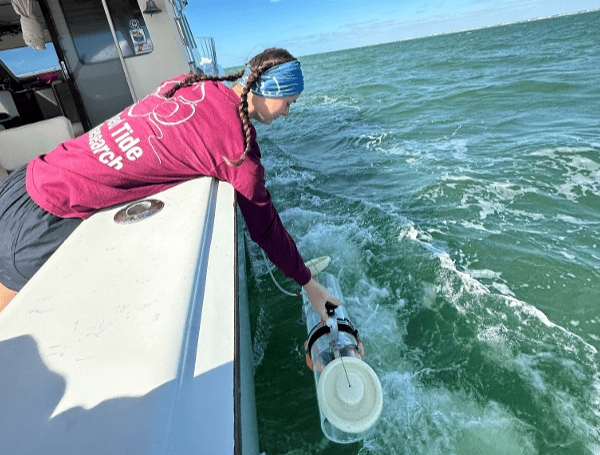Florida’s Gulf Coast is experiencing an increase in red tide activity, with a significant number of samples testing positive for the harmful algal bloom. Over the past week, the Florida Fish and Wildlife Conservation Commission (FWC) detected Karenia brevis, the organism responsible for red tide, in 75 samples collected from the Gulf Coast.
Bloom concentrations were observed in 15 samples from Southwest Florida, raising concerns about potential impacts on marine life and human health.
Satellite imagery confirms the presence of intense chlorophyll patches, indicative of K. brevis blooms, offshore of Charlotte, Lee, Collier, and Monroe counties. An ongoing research cruise has further validated the presence of red tide in these areas.
READ: Will Spring Arrive Early? AccuWeather To Release Spring Forecast Amidst Record Cold January
Red Tide Distribution:
- Southwest Florida: K. brevis concentrations ranged from background to high levels in various locations, with the highest concentrations observed in and offshore of Lee and Collier counties.
- Northwest Florida: K. brevis was observed at background concentrations offshore of Okaloosa County and very low concentrations offshore of Hernando County.
- East Coast: No K. brevis was observed along the Florida East Coast.
Fish kills suspected to be related to red tide have been reported in Sarasota, Lee, Collier, and Monroe counties. Respiratory irritation, also potentially linked to red tide, has been reported in the same counties.
READ: Hillsborough County To End State Of Local Emergency For Hurricanes Helene, Milton
The National Oceanic and Atmospheric Administration (NOAA) provides forecasts utilizing FWC and partner data on their Gulf of Mexico Harmful Algal Blooms Forecast website. Residents and visitors are encouraged to consult this resource for the latest information on red tide conditions.
Please make a small donation to the Tampa Free Press to help sustain independent journalism. Your contribution enables us to continue delivering high-quality, local, and national news coverage.
Connect with us: Follow the Tampa Free Press on Facebook and Twitter for breaking news and updates.
Sign up: Subscribe to our free newsletter for a curated selection of top stories delivered straight to your inbox.

